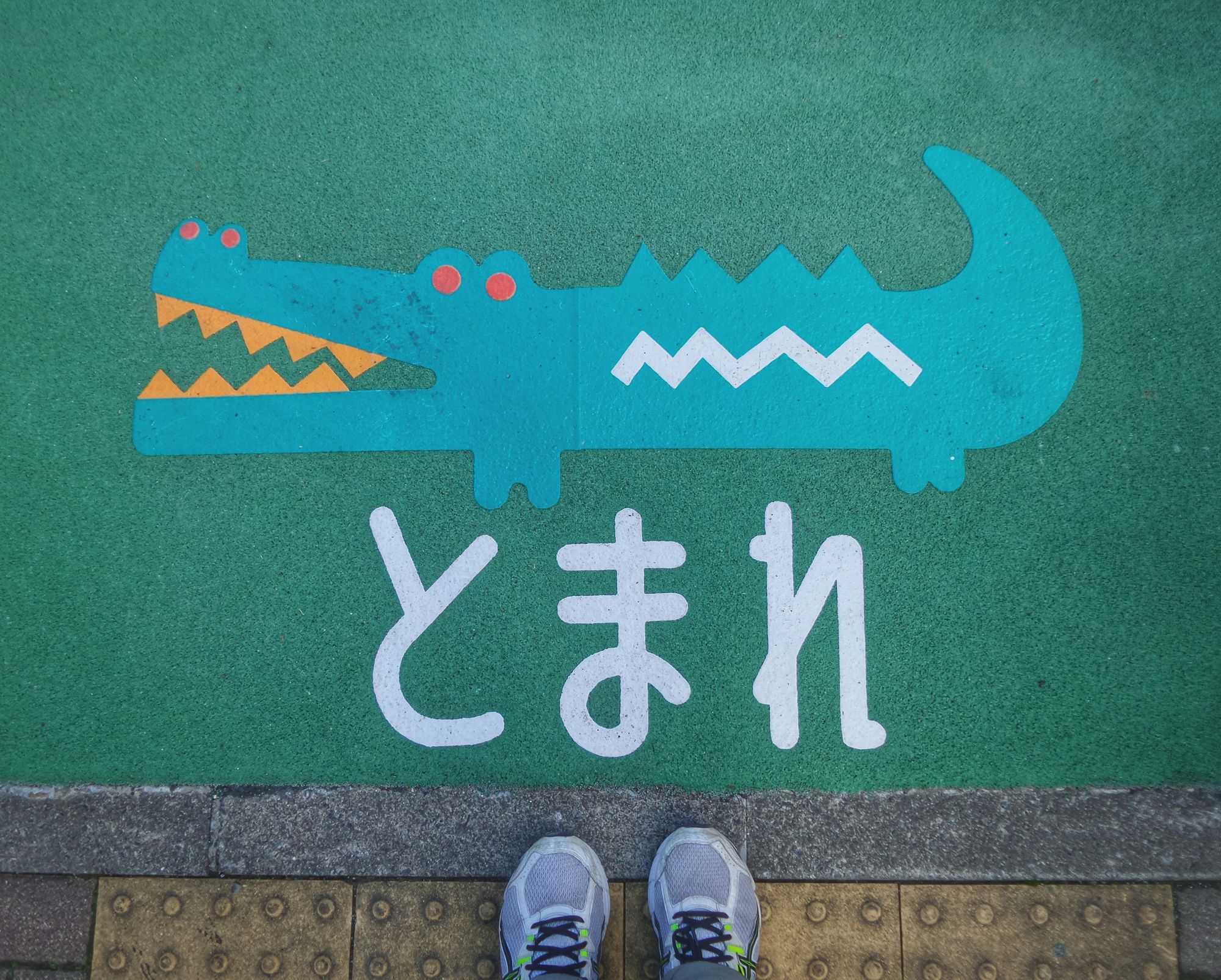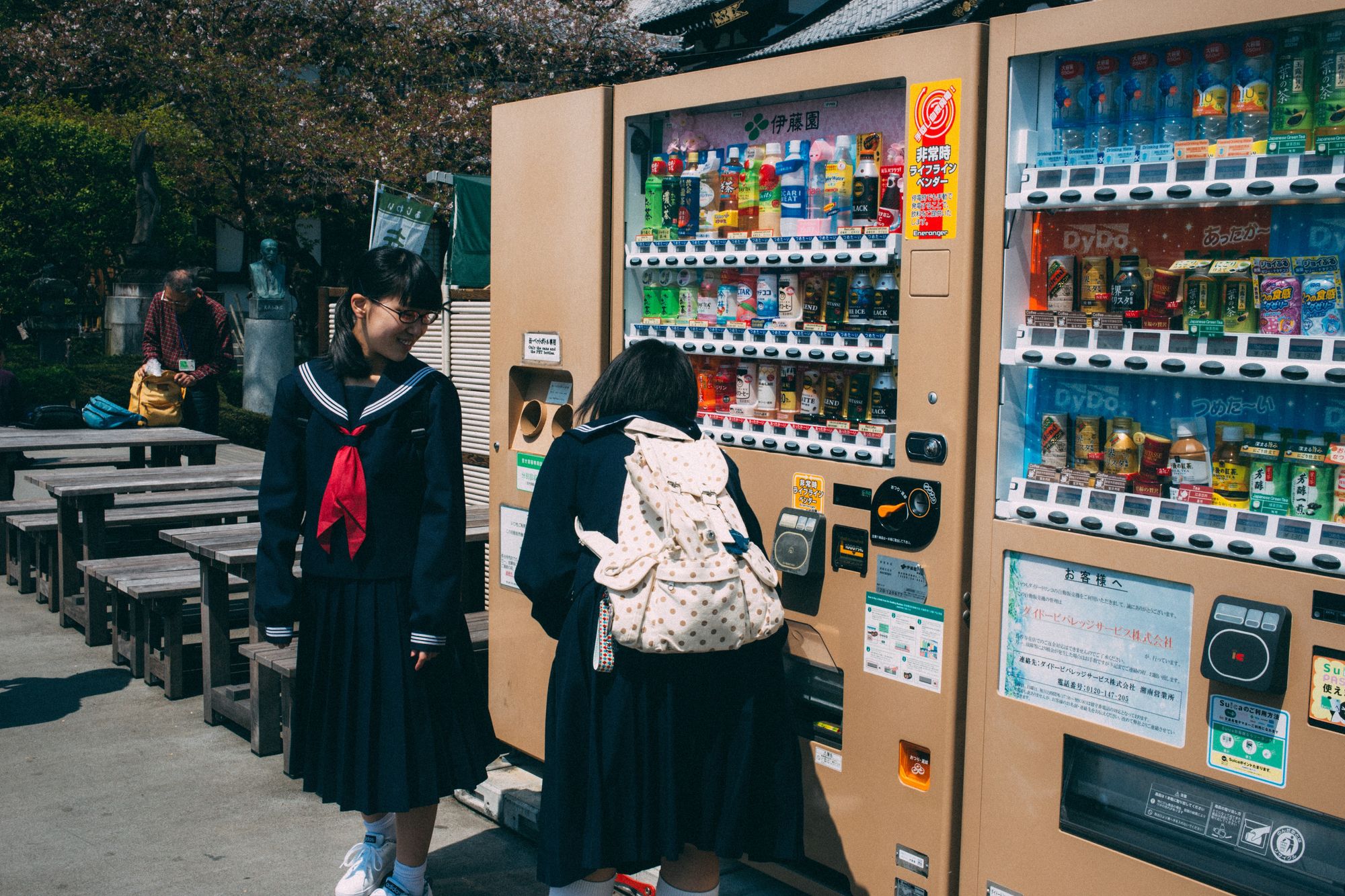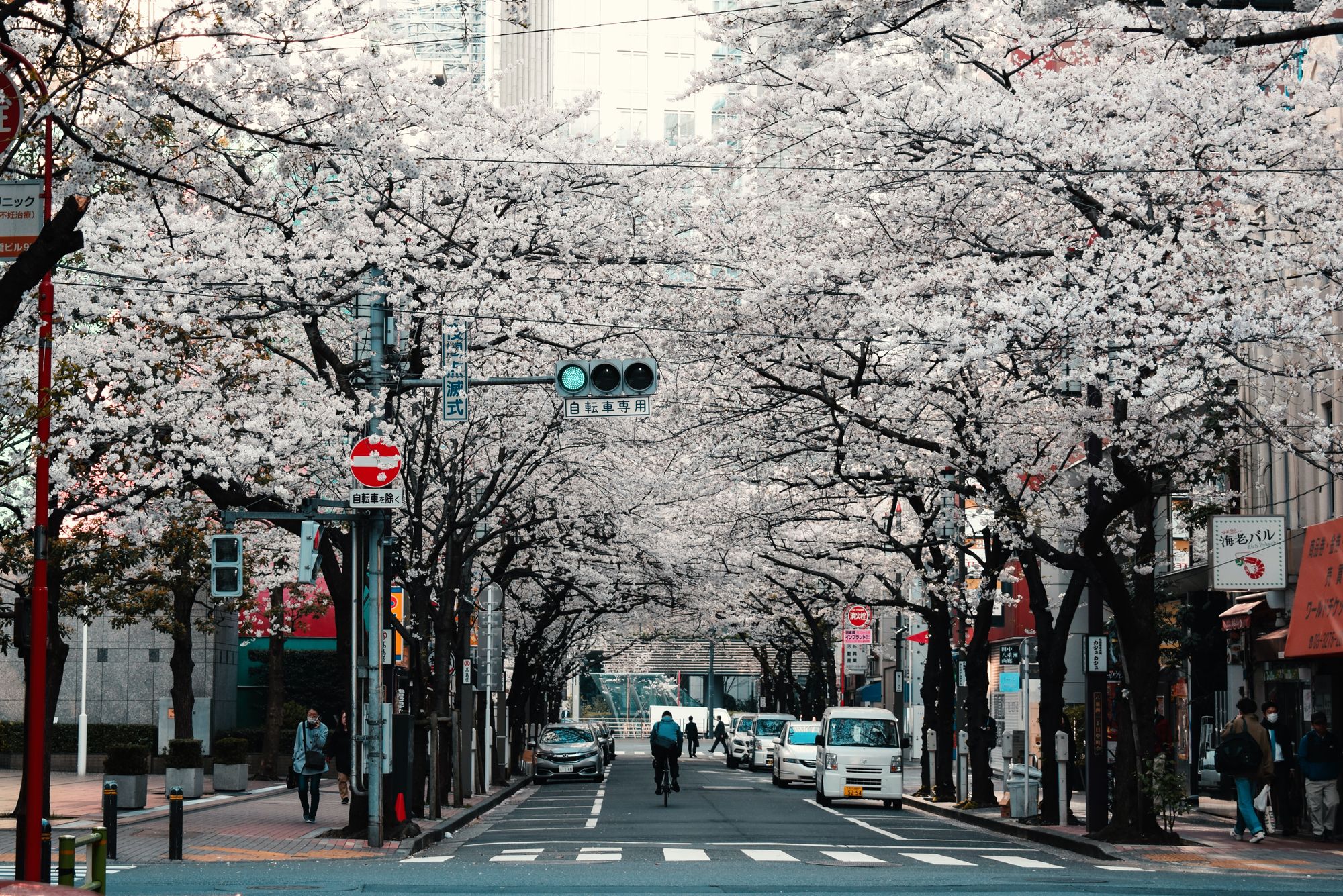This article will be part 1 of a 3 part series. The first part will focus on learning hiragana, the second katakana, and the third kanji.
Have you ever wanted to learn Japanese? Well, learning to write and read Hiragana is a great place to start!
Welcome to this quick and easy guide to learning Hiragana, the most basic characters and one of three writing systems, or "kana," used in the Japanese language.
This article covers how Hiragana and Katakana are used differently, how to read and write the characters, and tips on pronunciation. It also includes exercises as well as a few learning resources to enrich your Japanese studies.
You're probably just starting out your Japanese learning journey and if you want to make sure to make the best choices and choose the best options out there then check out our ultimate guide to learning Japanese.

What is Hiragana? A Quick Background to the Japanese Language
Originally developed to sound out Chinese characters, this curvy script was used primarily by women and referred to as "onnade," or "women's hand." Men typically wrote in Kanji or Katakana.
Over the course of time, Japanese Hiragana was eventually simplified into a one-to-one relationship between written and spoken syllables. In 1946, the Japanese government codified the current orthography. Today, it is the most basic building block of the modern Japanese language.
Hiragana is a phonetic alphabet that can represent every sound in the Japanese language. This makes it very easy to read and write Hiragana.
In theory, you could write everything in Hiragana. However, the text would be indecipherable (or at least very difficult to interpret) because Japanese words are written with no spaces between them.
Therefore, Japanese Hiragana is used in combination with Katakana and Kanji characters to separate each word and create grammatically functional sentences.
How are Hiragana & Katakana Used in Japanese?
Hiragana and Katakana characters are both phonetic alphabet systems, where each written character represents one syllable sound. However, there are some stark differences between the two writing systems.
Hiragana, which literally means "flowing" or "simple" kana, is depicted with curvy lines and can be written almost like a cursive English word.
Katakana characters are more angular and simple. Beyond the differences in the way the characters look, the two scripts also hold different functions in the Japanese language.
All the Hiragana characters can be used to write a native Japanese word or name, signify grammatical particles, and illustrate furigana (the phonetic pronunciation of Kanji characters).
In Japan, young children are first taught Hiragana to spell out their names and basic vocabulary in Kindergarten and Elementary school. Some text written with Kanji can also be accompanied by its furigana spelling.
In contrast, Katakana is used to represent foreign or borrowed words, articulate onomatopoeia, or otherwise add emphasis to a native word or phrase (as you would with ALL CAPITAL LETTERS in English, for example on a public sign or advertisement).
How to Learn Hiragana - The Basic Hiragana Characters
The Japanese Hiragana alphabet consists of 46 phonetic characters, with each one representing a key sound or syllable.
There are five vowel sounds represented as a (あ), i (い), u (う), e (え), and o (お), and pronounced as 'ah', 'ee', 'ooh', 'eh', and 'oh'.
Other characters depict a consonant sound followed by a vowel sound, with the Japanese sound 'n' (ん).
A basic Hiragana chart will usually have the vowel sounds located in the starting column or row. All of the other characters are organized by consonant sounds in the order of the original vowel sounds.
For example, after 'a', 'i', 'u', 'e', 'o', we would learn 'ka', 'ki', 'ku', 'ke', 'ko', and then 'sa', 'shi', 'su', 'se', 'so', etc..
Sometimes a single character can depict a word, and other times multiple characters are strung together to create a word.
Let's take a look at some examples:
HA - HI - HU/FU - HE - HO
HA (は):
- hai - yes
- haru - Spring
- hana - flower; nose
- hanabi - fireworks
- hare - good weather; sunny
- hashi - bridge; chopsticks
- hanasu - to talk; to speak
- hayai - fast; quick; soon
- hachi - eight
- hashiru - to run
HI (ひ):
- hi - flame; fire
- hitori - one person; alone
- hime - princess
- hito - person
- hikouki - airplane
- hiru - daytime; midday
- hirugohan - lunch
- hikari - light
- hige - mustache; beard
- hiji - elbow
HU/FU (ふ):
- fuyu - Winter
- futari - two people
- futon - Futon; floor bed
- futoru - to become fat
- furo - bath
- futou - envelope
- fune - boat
- futsuu - normal
- fuku - clothes
- fukuro - bag
HE (へ):
- he - to; for
- hebi - snake
- heiwa - peace
- hen - strange
- heya - room; chamber
- heta - unskillful
- henji - reply; response
- henken - prejudice; bias
- heishi - soldier
- hensou - disguise
HO (ほ):
- ho - sail
- hon - book
- hontou - truth; reality
- houritsu - law; statue
- honyaku - translation
- houkou - direction
- houseki - gem; jewel; precious stone
- housou - brodcast; announcement; program
- hodou - footpath; walkway
- hosoi - thin; slender
NA - NI - NU - NE - NO
NA (な)
- nani - what
- nana - seven
- natsu - summer
- naze - why
- natsukashi - nostalgia
- natto - fermented soybeans
- namae - name
- naru - to become
- nami - ocean wave
- namida - tears
NI (に)
- ni - two
- niku - meat
- nishi - west
- nichiyoubi - sunday
- ningyou - doll; puppet
- nikki - diary; journal
- ningen - human
- ninjin - carrot
- ninja - ninja
- niwa - garden
NE (ぬ)
- ne - right? isn't it?
- neko - cat
- neru - sleep
- nemui - sleepy
- nezumi - rat
- negi - green onion
- nendo - clay
- nenpi - fuel consumption; gas mileage
- nennen - year by year; annually
- nenshyuu - annual income
NU (ね)
- numa - marsh; swamp
- nuru - to paint; to plaster; to put up (wallpaper)
- nuu - to sew or stich; to weave one's way (through a crowd)
- nusumi - stealing
- nuka - rice bran
- nurikaeru - to repaint; to rewrite; to remake
- nukumori - warmth
- nuigurumi - stuffed toy
- nukeana - secret passage; underground passage
- nui - embroidery; sewing
NO (の)
- no - indicates possessive tense
- nou - brain
- nori - dried seaweed
- nomu - to drink
- nomimono - beverage
- noru - to get on (a plane, bus, ship, etc.)
- noboru - to ascend; to go up
- nozomu - to desire
- nouryoku - ability; faculty
- nokosu - to leave (behind, undone)
MA - MI - MU - ME - MO
MA (ま)
- maguro - tuna
- mantan - full in capacity
- mainichi - every day
- mawari - circumference
- mado - window
- manga - comics
- matsuri - festival
- mame - beans
- matsu - to wait
- machi - town, neighborhood
MI (み)
- mi - fruit; nut; seed
- mimi - ears
- midori - green
- miru - to look
- mirin - rice vinegar
- miso - fermented soy paste
- mizu - water
- michi - road or way
- minami - south
- mizuumi - lake
MU (む)
- mura - village
- musuko - son
- mune - chest
- muryou - free of charge
- muzukashi - difficult
- mukou - opposite side
- mure - group; crowd; cluster
- mujyan - contradiction
- mugen - infinity
- murasaki - purple
ME (め)
- me - eyes
- megane - eyeglasses
- meirei - order; command
- menkyo - license
- meshi - cooked rice
- mensetsu - interview
- meishyo - famous place
- menseki - area
- meishi - business card
- meibutsu - famous product
MO (も)
- mo - too; also
- momo - peach
- moyashi - bean sprouts
- mori - forest
- mokuyoubi - Thursday
- mondai - problem
- mondainai - no problem
- moto - origin; source
- monogatari - story; tale
- moufu - blanket
TA - CHI - TSU - TE - TO
TA (た)
- ta - rice field
- tamago - egg
- taishikan - embassy
- tanjoubi - birthday
- taifuu - typhoon
- taiyou - sunny
- taiho - arrest
- tani - unit; denomination
- tani - valley
- tairiku - continent
CHI (ち)
- chi - blood
- chisai - small
- chikatetsu - underground train; subway
- chyuui - attention; notice
- chyuushyajyou - parking lot
- chyuugakkou - middle school
- chikara - power; force; strength
- chikyuu - earth
- chyuushoku - lunch
- chishiki - knowledge
TSU (つ)
- tsunami - tidal wave
- tsuki - moon
- tsukue - desk
- tsuri - fishing
- tsuugaki - commuting to school
- tsuyu - rainy season
- tsukau - to use something
- tsukuru - to make or produce
- tsuyoi - strong or potent
- tsutomeru - to work for or to be employed at somewhere
TE (て)
- te - hand
- tekami - letter; message
- tebukuro - gloves
- tenrankai - art exhibition
- tenki - weather
- tenkyohou - weather forecast
- tetsudou - railroad
- tetsu - iron
- tetsugaku - philosophy
- tennou - emperor of Japan
TO (と)
- to - and; with
- tori - bird; chicken
- tonkatsu - pork cutlet
- tokei - watch or clock
- toshyokan - library
- tokubetsu - special or particular
- toki - time; hour; moment
- toshi - city or town
- tou - tower; steeple
- toshiyori - old person
SA - SHI - SU - SE - SO
SA (さ)
- sake - alcohol
- san - three
- sanpo - a walk or stroll
- saifu - purse; handbag; wallet
- satou - sugar
- sashimi - raw fish
- sangyou - industry; livelihood; occupation
- saka - slope; incline; hill
- sara - plate; dish; platter
- saru - monkey
SHI (し)
- shi - death
- shigoto - job
- shyukudai - homework
- shinbun - newspaper
- shyashin - photograph
- shyoku - meal; food
- shio - salt
- shiro - white
- shyokudou - dining hall; cafeteria; restaurant
- shima - island
SU (す)
- su - nest; breeding place; hive
- sushi - sushi
- suiyoubi - Wednesday
- suidou - water supply
- suugaku - mathematics
- suna - sand
- suji - muscle; tendon; sinew
- sukoshi - a little bit; a small amount
- sukunai - scarce; insufficient; seldom
- suki - liking something
SE (せ)
- sensei - teacher
- senpai - upperclassman; senior or superior
- sentaku - washing; laundry
- sebiru - business suit
- sekken - soap
- seikatsu - life; living; livelihood
- setsumei - explanation
- sekai - world
- sensou - war
- seiji - politics; government
SO (そ)
- so - ancestor; forefather; originator
- sora - sky
- souji - cleaning; cleanliness
- sotsugyou - graduation; completion of a course
- soto - outside
- sonzai - existence
- sokudo - speed; velocity
- sozoku - succession; inheritance
- sore - that (over there)
- soko - there (place relatively near the listener)

How to Learn the Pronunciation of each Hiragana Character
Given that Hiragana is phonetic, the pronunciation of each Japanese word is pretty straightforward and dictated by the syllable each character represents.
However, there are a few exceptions to be aware of.
One common anomaly you might see is a small 'tsu' (っ) in the middle of a word. This is translated into a double consonant in English and depicts a short break in the rhythm of the word. An example of this would be the word for school, 'gakkou' (がっこう).
Additionally, other transformations known as 'dakuten', and 'handakuten' will tweak the original hiragana character to form other sounds.
'Dakuten' are represented with two short strokes to the right of a character to create new sounds. For example, 'ka' (か) written with a dakuten becomes 'ga' (が).
The unvoiced consonant sound changes to a voiced one, and therefore a 'k' sound will become a 'g' sound. You might notice that the characters for 'za', 'da', and 'ba', are similar to 'sa', 'ta', and 'ha', but with a dakuten tacked on to the end.
Similarly, you might sometimes see a small circle to the right of a character, specifically those characters starting with an 'h' sound. These are called 'handakuten' and will transform all 'h' sounds into plosives, or 'p' sounds.
The dakuten and handakuten rules also apply to the same characters in Katakana. A character with one of these marks will appear quite a bit, so it's worth putting into practice if you want to learn hiragana fast.

Let's take a look at some examples to help you master your Hiragana pronunciation:
GA - ZA - DA - BA - PA
GA (が)
- ga - indicates subject or occasionally object
- gakkou - school
- gakushya - scholar, academic
- gakusei - student
- gaikoku - foreign country
- gaikokujin - foreigner
- gaman - self control
- gakki - musical instrument
- ganseki - rock
- gake - cliff
ZA (ざ)
- zannen - too bad; regrettable or unfortunate
- zaisan - propert; fortune; assets
- zaseki - seat
- zabuton - flat floor cushion used when sitting or kneeling
- zaisei - public finance
- zaiko - stock; inventory
- zai - fortune; riches
- zairyou - materials; ingredients
- zatsuon - noise; interference; gossip
- zaimoku - lumber or timber
DA (だ)
- daigaku - university
- daisuki - I love you; to like very much
- daidokoro - kitchen
- dansei - man
- daitouryou - president
- dare - who
- dasu - to take out
- daijobu - to be okay; safe; secure
- dandan - gradually; by degrees; little by little
- daikon - radish
BA (ば)
- baka - idiot
- bangou - number
- ban - evening; night
- bangohan - dinner
- bangumi - TV program
- bashyo - place; location; spot
- baachan - grandmother
- bakudan - bomb
- bassuru - to punish or penalize
- baiten - stand; stall; kiosk
PA (ぱ)
*There are no hiragana words that start with PA
- yappari - actually; as I thought
- denpa - cell signal; radio waves
- suppai - sour
- shyoppai - salty
- ippai - full, a lot

Writing Hiragana Characters
Writing Japanese is essential for learning Hiragana, Katakana, and Kanji.
In Japan, good handwriting and stroke order are highly valued and calligraphy is an art praised in Japanese society.
Not only will writing practice help you connect each character to each sound, but it will help you discern between similar-looking ones and greatly improve the speed at which you can read Hiragana.
Here are a few ways to practice writing in Japanese:
Write your own Hiragana chart
This will be the base of your entire Hiragana practice. After you have written it out once, challenge yourself to start from different sections and fill in all the blanks.
Not only will you learn stroke order and teach yourself the sound for each and every character, but you can refer to this Hiragana chart throughout your studies.
Make your own Hiragana flash cards
Flash cards are crucial to teach yourself new Japanese words. Start by writing one syllable at a time; put the Hiragana character on one side and the English letters on the other.
After some time, write an English word on one side, and a Japanese word on the other. Your next task from there would be to make flashcards to practice sentences and phrases.
Create your own mnemonics
Remember silly phrases like "Please Excuse My Dear Aunt Sally" to memorize the mathematical order of operations PEMDAS? These tricks are called mnemonic devices, where we usually use an English word to represent each letter of a long acronym.
Well, you can apply the same strategy to learning Japanese. The key is trying to ascribe an image to the shape of each Hiragana character.
For example, the 'yo' sound (よ) could look like a person waving for attention and saying "yo!" Maybe the sound 'e' (え) could look like a person running, and you could associate it with a quirky phrase like, "I could never run that fast."
Have fun with it and try to invent your own mnemonics for other sounds!
Learning Hiragana Through Video
Perhaps the best thing you could do to practice your listening and reading is to start watching Japanese movies and TV shows with subtitles.
By engaging with Japanese media, you will be able to hear how Japanese is naturally spoken, and pick up on social cues and colloquialisms you might not find in typical Japanese textbooks.
And if you're going to binge on television for a few hours, you might as well use that time to learn Japanese and teach yourself a thing or two!
A website like Lingopie provides a wide array of Japanese resources to help you learn Hiragana, Katakana, and eventually Kanji while watching Japanese movies and TV shows.
With Lingopie, you can access many popular Japanese anime, movies, and TV shows. However, on top of this, Lingopie also provides online tools like interactive subtitles and flashcards to make learning Hiragana and Japanese as a whole a lot easier and more convenient.
For access to a diverse selection of great Japanese TV shows and films, sign up for Lingopie. This streaming service offers quality Japanese shows and films that are optimal for practicing both Hiragana and Katakana.
FAQs Relating to the Japanese Alphabet and Learning Hiragana characters
So, any questions so far? Hold that thought! Here are some commonly asked and answered FAQs. A lot of these questions address two key gripes that come with learning any language: strategy and time.
Hopefully these will lend some good advice and give you some direction. However, remember that consistency, dedication, and practice are key to learning Hiragana, Japanese, and any alphabet or language for that matter!
Is hiragana easy to learn?
Yes! Hiragana is a phonetic alphabet, so every character depicts one specific sound. There are 46 characters in total in the Hiragana script. A little time and practice are all it takes.
How can I memorize hiragana quickly?
Make a Hiragana chart. Start with all the basic Hiragana characters, and then move on to the transformations.
Make your own Hiragana flash cards. This is perhaps the most crucial exercise to learn Hiragana fast. Start with each individual sound, and then for every new word or phrase you learn.
These two memorization techniques can be applied to Katakana and Kanji as well.
What is a good way to learn hiragana?
Practice writing Hiragana! Keep a dedicated notebook for vocabulary. Sound out the syllables as you write them.
Read manga! Japanese graphic novels are a great place to start learning how to read Hiragana.
Immerse yourself in Japanese TV shows and movies. Use Lingopie's interactive subtitles and flashcards for a deeper understanding of Hiragana.
How long does it take to learn hiragana?
Learning the Hiragana alphabet can take as little as a few hours. After one afternoon of intense memorization, all you need to do is practice.
Summing up: Learn the Japanese Alphabet: A Guide to Hiragana
Now you know how manageable it is to start learning Japanese! Mastering Hiragana only takes a little bit of time and effort and will open the door to learning Katakana and Kanji in the future.
As you've seen, learning Hiragana is a phonetic alphabet organized logically and systematically. There are only a few exceptions and transformations to be aware of.
We've covered a broad foundation up to this point, including basic and modified characters, a few examples of simple vocabulary for each, and some theory behind written Hiragana and how it translates to spoken Japanese.
Hopefully, you've been inspired to learn Hiragana with a few simple strategies. Be sure to practice writing, drill yourself using flashcards, and dedicate yourself to learning the pronunciation of each sound.
And remember, learning can be fun, too! Learning through films and TV shows is probably the best way to get feel for how people actually communicate in Japan using Hiragana.
We also recommend watching lots of Anime. We even made a list with some of the best Anime out there to get you started!
Don't forget to sign up for a 7-day free trial with Lingopie to start learning Japanese and Hiragana script through Japanese movies and TV shows.
Related: 9 Japanese Movies on Netflix for Japanese Learners
がんばってね!





![The 8 Best Movies on Netflix to Learn Russian [For Beginners]](/blog/content/images/size/w1200/2022/10/The-8-Best-Russian-Movies-on-Netflix-to-Learn-the-Russian-Language.webp)
![6 Best Japanese Language Apps Worth Trying [TESTED]](/blog/content/images/size/w300/2025/12/best-apps-to-Learn-Japanese.jpeg)
![A Guide To Kansai-ben Dialect For Beginners In Japanese [2026]](/blog/content/images/size/w300/2025/03/Kansai-ben-dialect.jpg)

